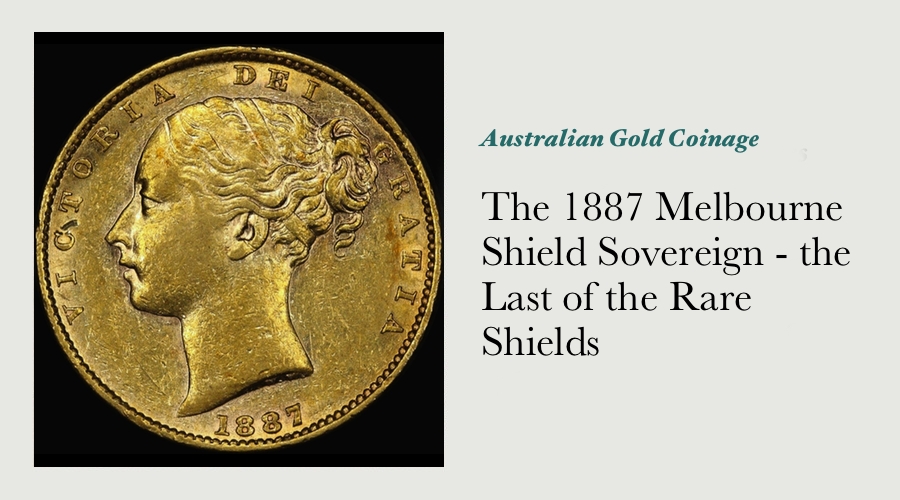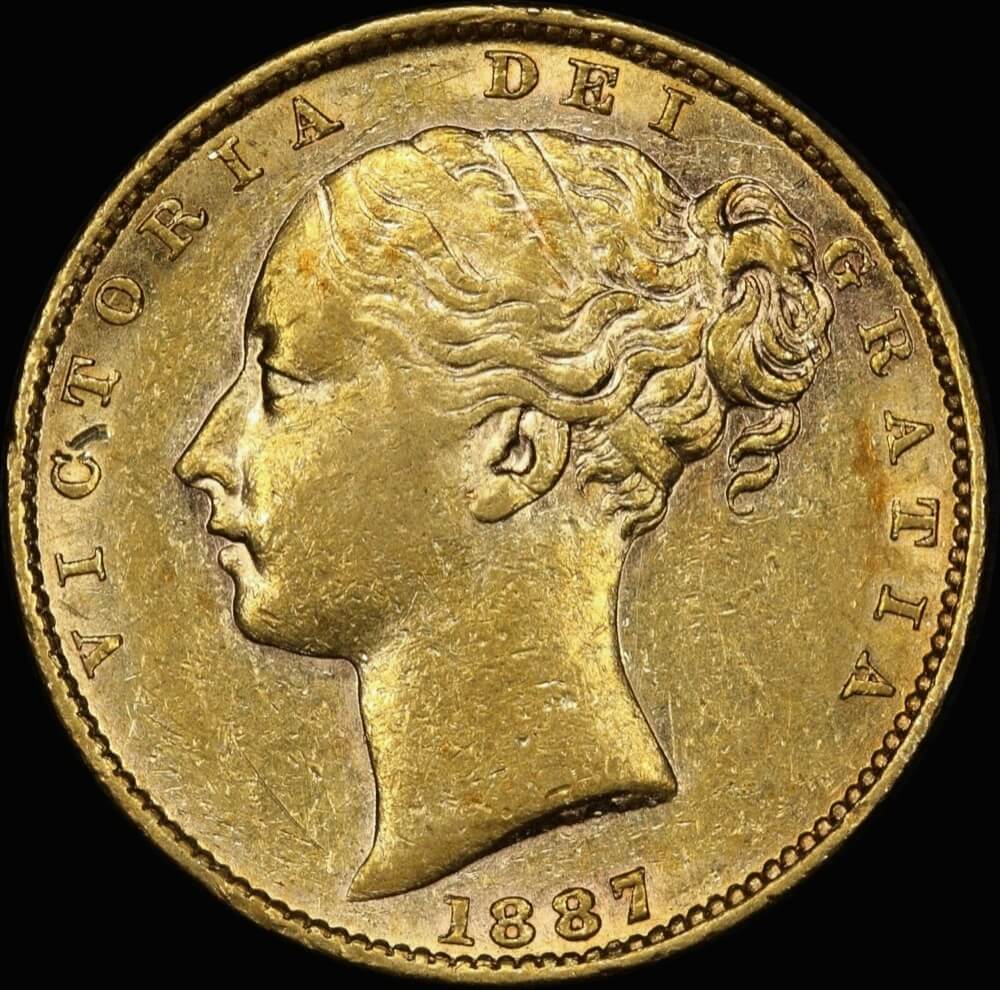The 1887 Melbourne Shield Sovereign - the Last of the Rare Shields

The 1887 Melbourne Shield is the last of the enigmatic rare dates that are among the Australian Shield sovereign series. It is one of the few Australian sovereigns that are rarer than their equivalent half-sovereign and is also one of the rarest coins ever struck by the Melbourne Mint.
It has long had a strong appeal to date collectors of Australian sovereigns, if only for its rarity alone.
It’s not yet clear what the true cause of this coin’s rarity is, there are a few factors that may have played a role in restricting the number of coins that were struck, and further that restricted the number of coins that remain available to collectors today:
Limited Quantity Of Gold Deposited At The Melbourne Mint
Page 81 of the Annual Report by the Melbourne Branch of the Royal Mint in 1887 states that “The gold raised in Victoria during 1887 is estimated, by the Department of Mines and the Water Supply, to have been 617,571 ounces .... This is the smallest annual production since the discovery of gold in Victoria.”
With this statistic in mind, we can see that no matter what production considerations there may have been at the Melbourne Mint in 1887, nor what need (or lack thereof) there was for circulating currency in the Victorian economy in that year, the amount of raw gold available to for the production of sovereigns in 1887 was reduced significantly over previous years.
The Introduction of the Jubilee Head Obverse Design
1887 was a notable year for the Melbourne Mint, if only for the fact that three different die combinations were used to strike sovereigns that year.
1. The Young Head Obverse and the Shield reverse;
2. The Young Head obverse and the St. George reverse; as well as
3. The first Jubilee Head obverse and the St. George reverse.
Page 5 of the Royal Mint Annual Report for 1887 states that “On the 21st June the issue of the “Jubilee” coinage was commenced, and has continued uninterruptedly since.”
The staff of the Melbourne Mint saw fit to only record basic overall sovereign mintages in 1887 - 940,000 sovereigns were struck with the Jubilee Head obverse, while 1,910,000 sovereigns were struck with the Young Head obverse and either the Shield or St George & Dragon reverse) - the exact composition of this 1.91 million sovereigns between the St George & Shield reverse is not known.
As the 1887 Melbourne Shield reverse sovereign is exponentially rarer than the 1887 Melbourne half-sovereign, and as that coin has a mintage of 64,000 coins, it is thought that the actual mintage of the 1887 Melbourne Shield sovereign may well be substantially lower than 30,000 coins.
Property Speculation and Remittances to London
One historian describes the Victorian economy in 1887 as being beset by property speculation. Such was the rate of this speculation that a city block in Melbourne apparently almost doubled in value over the space of just a couple of months in the latter part of the year.
The Royal Mint's Annual Report for 1887 includes the following comments about banking activity in Victoria at the time: “The number of sovereigns struck at the branches of the Mint at Sydney and Melbourne, and sent to the Bank of England during the year, was only £202,000, as against £2,187,000 in 1886. The importations of gold coin from Australia have varied considerably in recent years, but have never fallen so low as in 1887."

In his monumental work "Labour and Industry in Australia", covering Australia's economic history, Timothy Coghlan states that: "The weather conditions of 1887 were highly favourable to all rural industries. The pastoral industry revived, and the harvest of the year outstripped all previous records, the wheat crop exceeding 19,000,000 bushels. In these favourable circumstances there was a great revival in general trade..."
The output of the silver and lead mines of Broken Hill during 1887 was valued at £574,000, and so rapid was their development that this was doubled during the following year. This increase had been anticipated, and towards the end of 1887 there was a wild outburst of speculation, which, beginning in Melbourne, soon reached Adelaide.
All classes took part in this speculation, and the extent to which persons of very limited means joined in, may be inferred from the fact that the Savings Bank deposits actually declined at the end of 1887 and during the first three months of 1888.
Further comments in the Royal Mint's Annual Report for 1887 state that as Australian banks had lent sums significantly higher than their previous annual average in 1887, far more gold was sent from London to Australia than was sent from Australia in that year. Most of the sovereigns produced in Australia in 1887 were retained by Australian banks as reserves against those loans.
In the absence of a precise mintage figure articulating the rarity of the 1887 Melbourne shield reverse sovereign, we can see that the rarity of this coin was influenced to some degree by the limited amount of gold mined in Victoria that year, the introduction of the Jubilee Head obverse to Australia's sovereigns, to the boom in trade and property speculation throughout 1887, and the consequent boom in lending by Australia's banks.